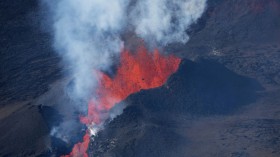The anticipated shift to cooler La Niña conditions in the Pacific has encountered delays, with experts now expecting a milder event to begin by late November.
This delay could reduce the typical cooling effect La Niña has on global temperatures, which may influence weather patterns across various regions in the coming winter months.
La Niña is a natural climate pattern that occurs as part of the El Niño Southern Oscillation (ENSO) cycle, alternating with El Niño and neutral conditions every few years. It often brings cooler sea surface temperatures to the Pacific, which can affect global weather. Despite early forecasts indicating a likely transition by mid-2023, La Niña has not fully developed as predicted.
Impact of Delayed La Niña on Global Weather
Forecasters at the U.S. National Oceanic and Atmospheric Administration (NOAA) initially expected La Niña to form between July and September with a 60% probability, increasing to 70% by August. However, the phenomenon remains elusive.
NOAA now projects a 60% chance of La Niña forming by November, but experts believe this event will be milder and brief, likely lasting from January to March, New Scientist reported.
Globally, La Niña typically brings dry conditions to the southern United States and wetter weather to parts of Asia. However, this milder version is not expected to significantly cool global temperatures, which have already risen due to recent El Niño activity and ongoing climate change.
READ MORE: Solar Maximum Confirmed by NASA: Peak Sun Activity Offers New Scientific Breakthroughs
What It Means for North Texas
In North Texas, La Niña usually results in warmer, drier winters. The NOAA forecast for winter 2024-2025 suggests that residents can expect above-average temperatures, with fewer chances for snow or ice. Rainfall is also expected to be below average, around 8 inches, and while there could still be occasional cold fronts, these will likely be short-lived.
Though La Niña is forming slower than expected, experts continue to monitor the situation. The reasons for the delay remain unclear, with some speculating that weaker trade winds in the Pacific may be contributing to the slower shift.
According to ABC 8, researchers are also exploring whether climate change could be influencing the unpredictability of these natural patterns.
For now, North Texas residents should prepare for a warmer, drier winter but stay alert for sudden weather changes, as La Niña winters can still bring unexpected cold spells.
READ MORE: Bottlenose Dolphins in Florida, Louisiana Found Exhaling Microplastic Fibers
© 2024 NatureWorldNews.com All rights reserved. Do not reproduce without permission.






